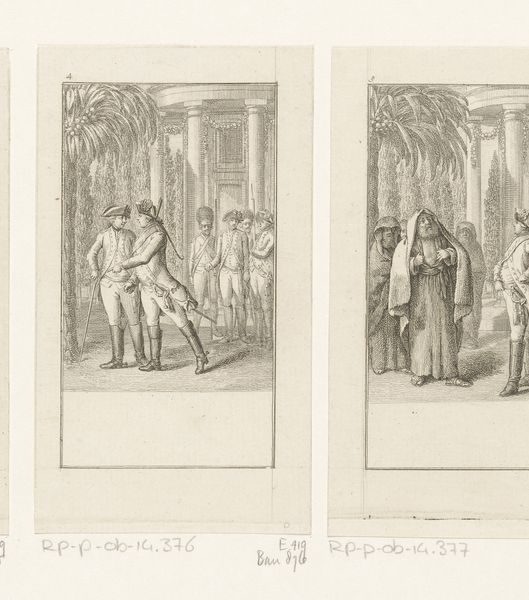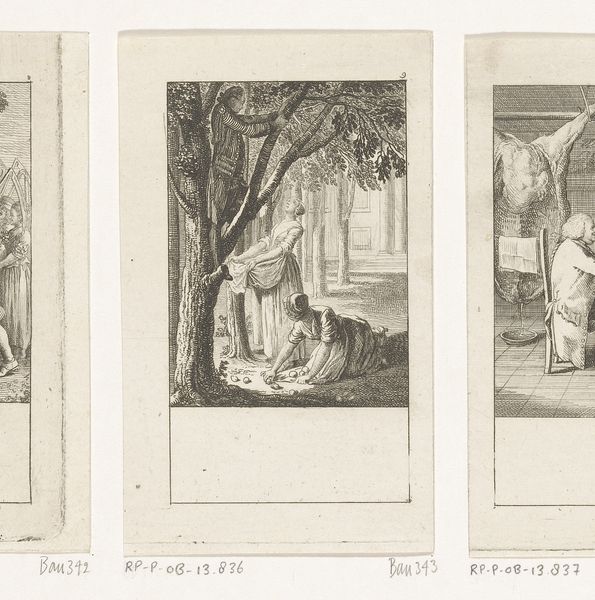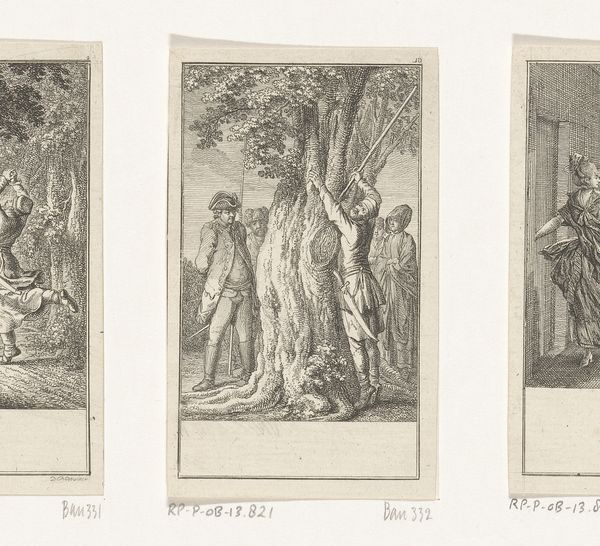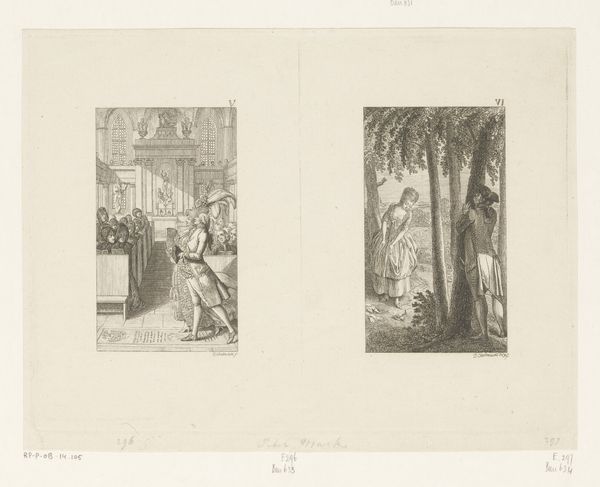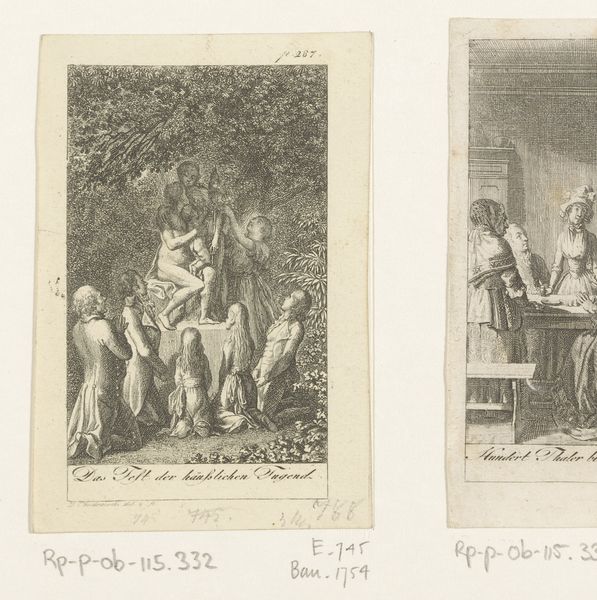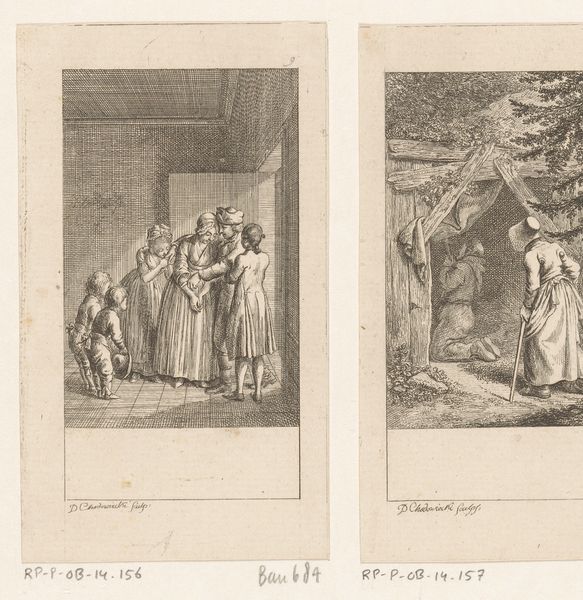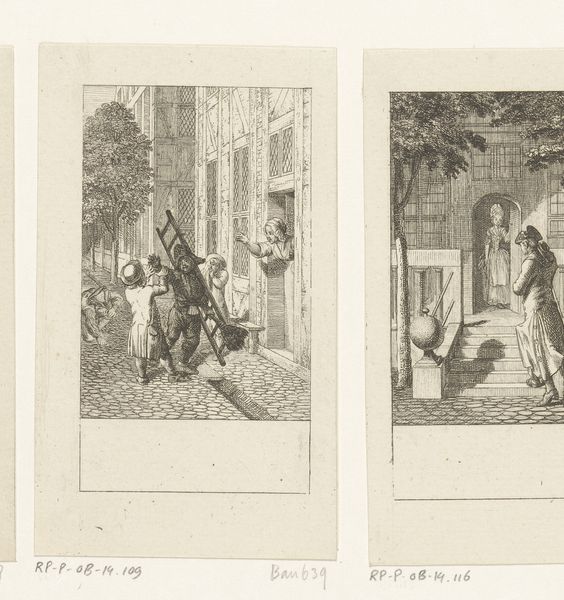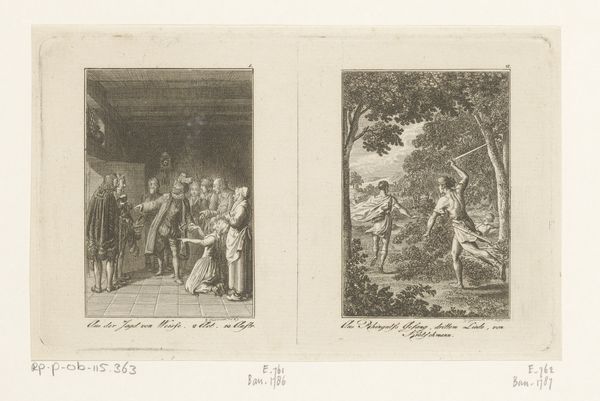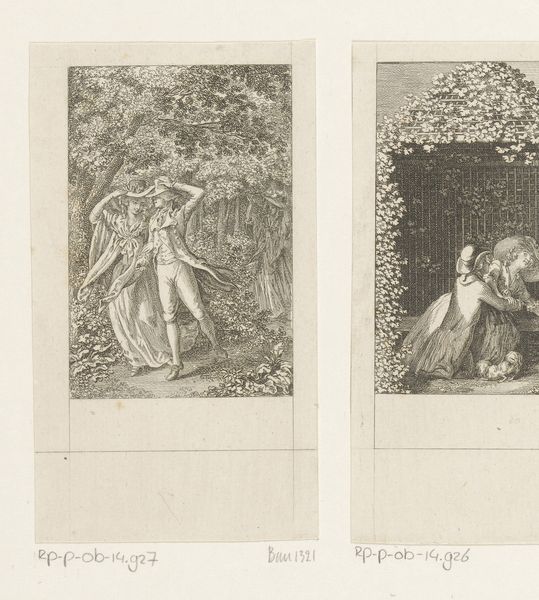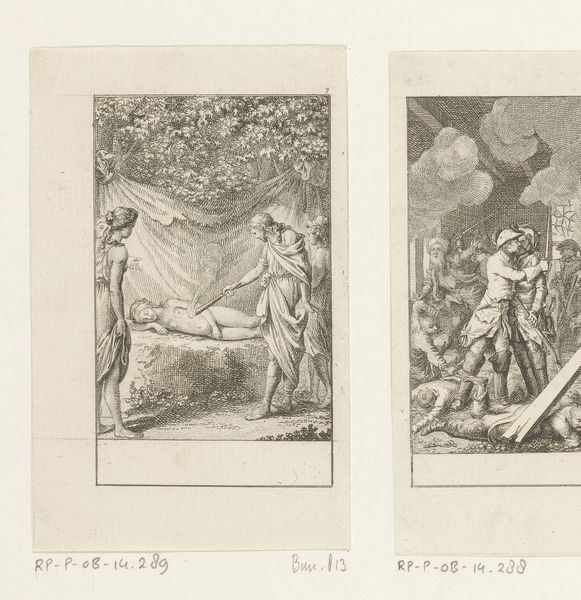
Dimensions: height 107 mm, width 64 mm
Copyright: Rijks Museum: Open Domain
Editor: This is "Figaro zit verdrietig in de tuin," or "Figaro sitting sadly in the garden," a print from 1785 by Daniel Nikolaus Chodowiecki, held at the Rijksmuseum. It feels…melancholy. The lone figure is very isolated in a detailed but somber landscape. What can you tell me about this work? Curator: It’s interesting that you perceive melancholy, as that ties into the political undercurrent of the time. Chodowiecki made this work during a period of social and political upheaval. How do you think the French Revolution, brewing at the time, may have impacted how audiences perceived imagery of sadness or social isolation? Editor: That’s a great point. Perhaps it reflected a general unease with the established order, even for someone seemingly as privileged as Figaro, if we associate the character with the opera. But does the style contribute to that unease? The baroque elements feel almost anachronistic. Curator: Exactly. The use of an older style can be read as commentary. Consider the institutional role of art at the time. Was Chodowiecki perhaps critiquing the established art world’s preference for certain styles and subjects, implicitly drawing parallels to other forms of societal structures resistant to change? What statement could he be making about the elite? Editor: So, by depicting Figaro in this way, was Chodowiecki maybe giving a voice to the growing discontent amongst those feeling left out, connecting with the audience beyond just the aristocracy? Curator: Precisely! The power of images lies not just in what they show but also how they resonate within the specific political and cultural contexts they were created. Editor: That's fascinating! I'd only focused on the immediate emotion, but seeing how socio-political forces are at play has really opened my eyes. Curator: Understanding that connection is the key to really unlock a work of art's message, how imagery shapes our social understanding, and how public art, in turn, is also molded.
Comments
No comments
Be the first to comment and join the conversation on the ultimate creative platform.
